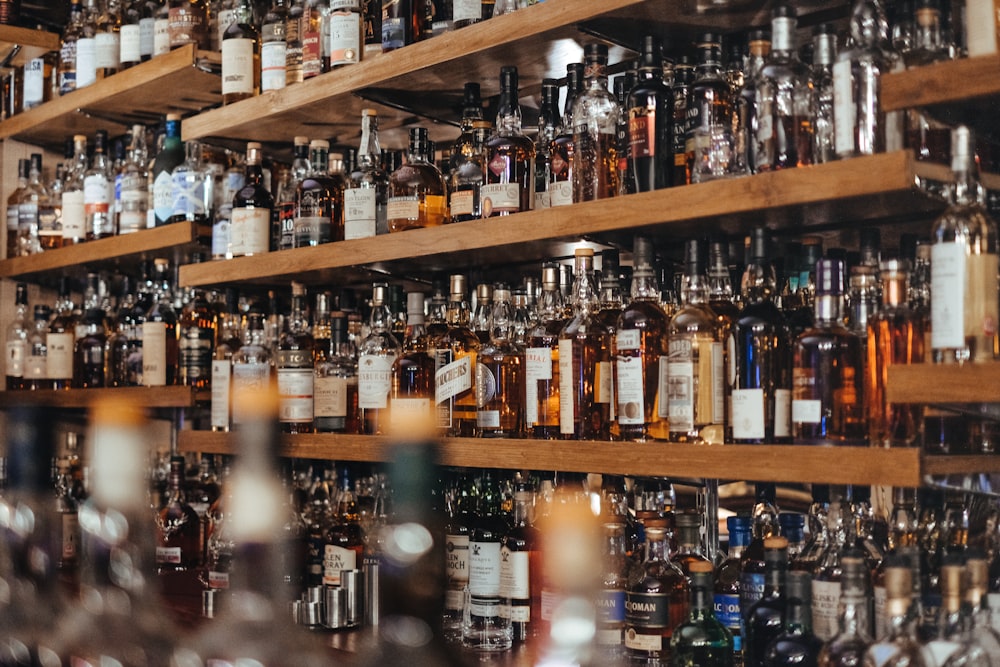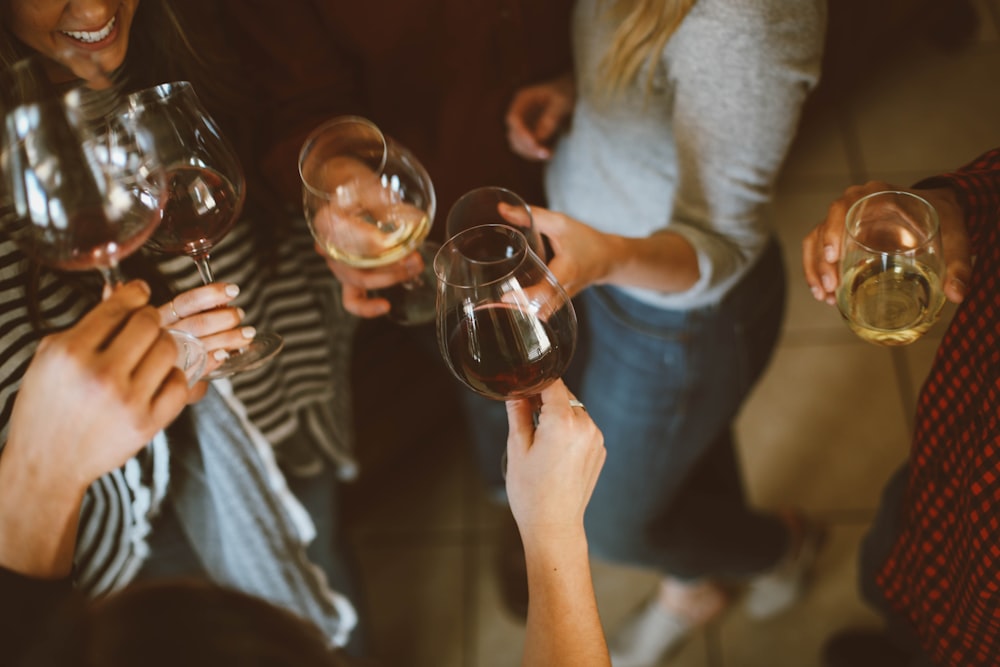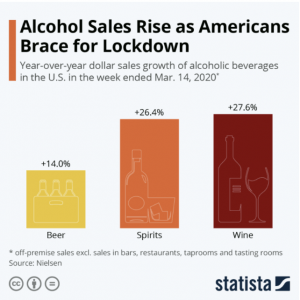The current COVID-19 pandemic presents multiple factors that may induce stress in women. Elements such as job insecurity, disruption of daily routines, unstable housing and negative impacts on 401(k)’s are examples of current stress factors. To cope with stress many people resort to alcohol to assist them through difficult times, as alcohol acts as a downer and sedative making it effective at temporary stress relief(Jones, Dr. Kirtly Parker). Reports from April of this year have shown that alcohol sales had increased by fifty-percent compared to the same time frame a year ago in 2019(Jones, Dr. Kirtly Parker). As a result of stay-at-home orders in effect there has been increased deliveries of alcohol directly to people’s homes(Jones, Dr. Kirtly Parker). With the increased consumption of alcohol in the United States of America it is important to clarify how alcohol affects one’s body and how alcohol may or may not have an impact on the COVID-19 disease.
In general, there is not a set “safe limit” of alcohol consumption as alcohol can have short and long term effects on most organs in our body with risk of negative health impacts increasing based on the amount of alcohol consumed(World Health Organization). Additionally, alcohol has been shown to debilitate immune systems based on the amount consumed, which can prevent the body from dealing with infections diseases(World Health Organization). Even in minute amounts alcohol can be a risk factor associated with cancer, decision making abilities and negative behaviours for one’s health(World Health Organization). Alcohol also presents a risk to pregnant mothers as it can harm the unborn child and lead to health complications within pregnant women(World Health Organization). In regards to COVID-19, extreme alcohol consumption increases one’s risk for acute respiratory distress syndrome, which is an impediment associated with COVID-19(World Health Organization).
With all that being stated regarding the risk factors associated with alcohol consumption here are some tips for how to handle alcohol concerning dealing with one’s stress and ensuring their health is not majorly impacted by alcohol. The first suggestion is to abstain from drinking to completely avoid the negative effects of alcohol and sobriety allows one to make clearer and more responsible decisions; however, if one does drink they should not allow themselves to drink to the point they are intoxicated(World Health Organization). Another key thing to remember is to not use alcohol while using any medications as alcohol can make the medication less potent to where it isn’t functional or may make a medication so potent that it becomes toxic(World Health Organization). Lastly, people should avoid using alcohol to deal with stress as drinking can lead to worse symptoms of panic, anxiety, depression and other mental disorders(World Health Organization).
The last bit of information I want to provide is in regards to rumors and misinformation about how COVID-10 interacts with alcohol. One rumor that needs to be put to rest is that alcohol consumption can destroy the coronavirus. Alcohol can be used as an epidermal disinfectant, but does not react the same way when consumed and can cause more harm than good(World Health Organization). Additionally, alcohol can not kill the Coronavirus when inhaled, meaning alcohol is not an effective throat or mouth disinfectant for COVID-19(World Health Organization). Lastly, I want to reiterate that alcohol overall has a negative effect on immune systems; therefore, alcohol consumption may increase one’s chance of complications from COVID-19.
In conclusion, for women dealing with stress related to the COVID-19 pandemic alcohol should not be used as a go-to stress reliever. Instead people should look to their family or community for assistance. Regardless of the specific source, people should look to and create self-support systems to deal with stress instead of relying on being intoxicated(World Health Organization).
References
- World Health Organization. Alcohol and COVID-19: What You Need to Know. 2020, www.euro.who.int/__data/assets/pdf_file/0010/437608/Alcohol-and-COVID-19-what-you-need-to-know.pdf.
- jones, dr. kirtly parker. “Stress Drinking: Alcohol Consumption Increases During COVID-19.” University of Utah Health, 23 Apr. 2020, healthcare.utah.edu/the-scope/shows.php?shows=0_p0xim6x3


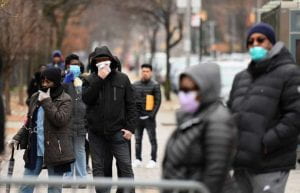

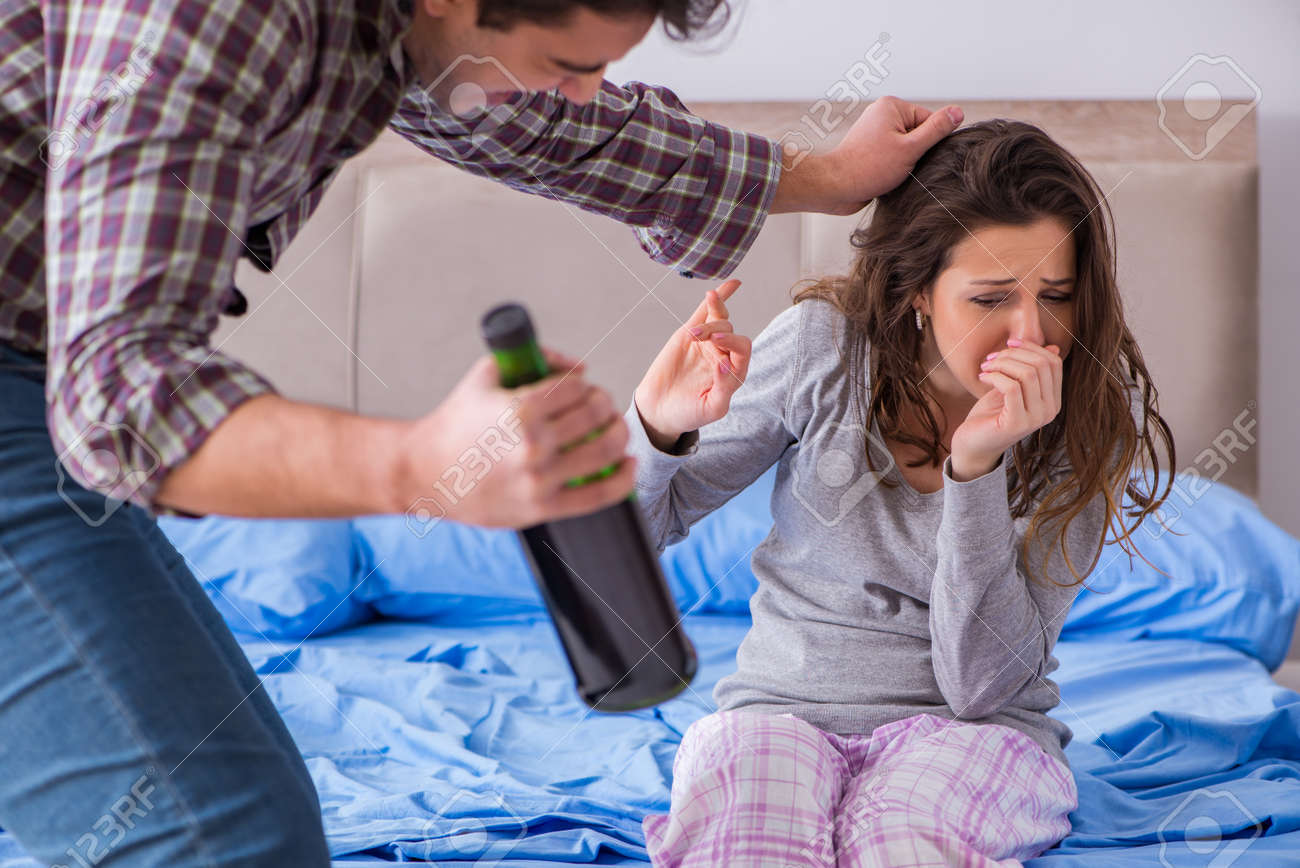








 Source:
Source: 




